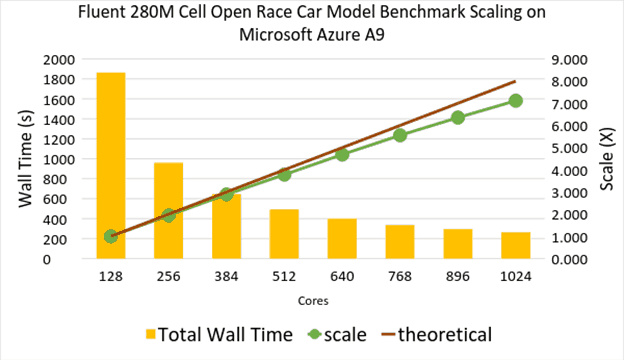In the race to dominate the growing market segment of cloud computing and infrastructure, industry giants are leveraging their specific focuses and talents to entice new and current users to continue to choose their offerings over others. Amazon is utilizing its traditional investments in cloud storage and open development platform, Google is taking an automated and AI approach to reductions in cost, and Microsoft seems prepared to lean on its productivity tie-ins.
However, Microsoft is also touting perhaps the lesser-known quality of Azure’s scalability. With today’s announcement of the addition of ANSYS computational fluid dynamics (CFD) solvers to Microsoft’s Azure Big Compute ecosystem, the company is primed to highlight its scalable cloud infrastructure at some of the highest levels.
According to Microsoft’s announcement,
Independent software vendor (ISV) applications like ANSYS CFD are at the heart of CFD simulations. Microsoft Azure “Big Compute” can provide thousands of cores on demand to ANSYS customers to run their complex CFD simulation projects. These simulations will be backed by HPC infrastructure in Azure enabled by RDMA and InfiniBand technology available for both Linux and Windows.”
In particular, the ANSYS CFD software gives engineers and scientists access to a ton of multi-pronged physics metrics that include fluid forces, thermal effects, structural integrity, electromagnetic radiation and so much more, to optimize their products. Microsoft has been working in conjunction with CFD Solver teams to run Azure Linux RDMA stacks that scale upwards of a few thousand cores. So far, Microsoft’s most important test have been with simulation models for Combustors, F1 Race Car cells, and Open Race Car sells.
So far, Microsoft’s most important test have been with simulation models for Combustors, F1 Race Car cells, and Open Race Car sells:
The induction of ANSYS into Azure’s Big Compute ecosystem enables a crowd-requested migration of HPC workloads over for easier ISV licensing models while accessing different public cloud backgrounds. For more information, visit ANSYS’s website on the partnership and products.



